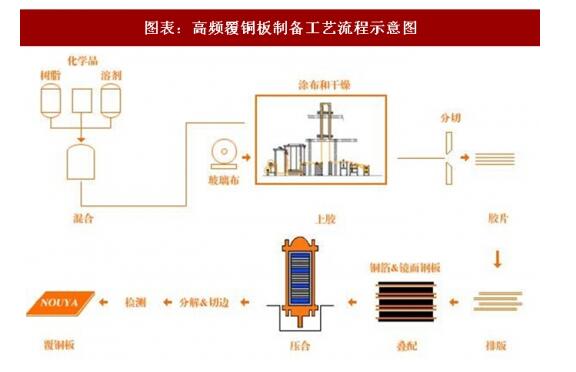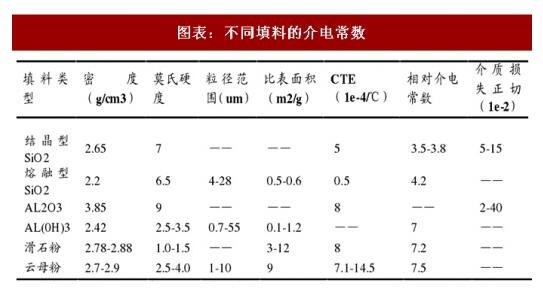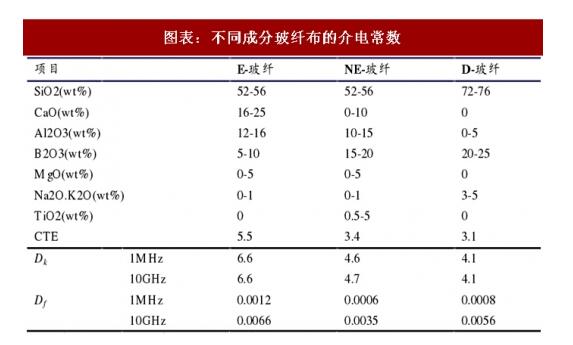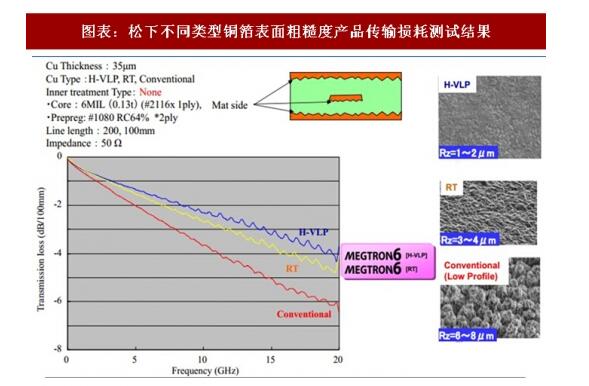The copper clad laminate, also known as the base material, is impregnated with a resin and is coated with copper foil on one or both sides. The plate-shaped material formed by hot pressing is called a copper clad laminate. It is the basic material for PCB, often called substrate. When it is used for multilayer board production, it is also called core board (CORE). This article mainly introduces the process flow of high-speed high-frequency copper-clad laminates. The preparation process of high frequency copper clad laminates is similar to that of ordinary clad laminates: 1. Mixing glue: The special resin, solvent and filler are pumped into the mixing barrel through a pipeline in a certain proportion and stirred, and the materials are required to be mixed into a viscous glue with fluidity. 2. Glue drying: The mixed glue liquid is pumped into the glue tank, and the glass fiber cloth is continuously immersed in the glue tank through the gluing machine so that the glue adheres to the glass fiber cloth. After the gluing, the fiberglass cloth enters the gluing machine oven and is dried at a high temperature to become a bonding sheet. 3, sticky cut after stacking BOOK: The dried adhesive sheet is trimmed as required, and the adhesive sheet (1 or more sheets) and the copper foil are overlapped and sent to the clean room. Use automatic stacking BOOK machine to mix good material with mirror steel plate. 4. Lamination: The combined semi-finished product is sent to the hot press for hot pressing from the automatic conveyor, so that the product is kept in the high temperature, high pressure and vacuum environment for several hours, so that the bonding sheet and the copper foil are joined together, finally Finished copper clad laminate with surface copper foil and intermediate insulating layer. 5. Shears: After cooling, the excess strips of the removed products are trimmed off, and at the same time, they are cut into corresponding sizes according to customer requirements. Chart: Schematic diagram of the preparation process of high-frequency copper clad laminates The raw material formula directly affects the dielectric constant and dielectric loss of the CCL. The core difficulty of the process production lies in the selection of the upstream raw materials and the formulation ratio: Resin: Traditional epoxy resins have a relatively large amount of polar groups and have higher dielectric properties. Other types of resins such as polytetrafluoroethylene, cyanate esters, styrene maleic anhydride, PPO/APPE, and others have been used. Low-polarization molecular structures such as thermosetting plastics are used to realize low-dielectric constant and low-loss materials. Chart: Dielectric constant and dielectric loss factor for different resins Filler: improve the physical properties of the sheet while affecting the dielectric constant The filler material in the manufacture of the substrate material refers to a chemical material used as a resin filler in addition to the reinforcing fiber material in the composition of the substrate material. The proportion of the filler material in the entire resin for the substrate material, the variety, and the surface treatment technology all affect the dielectric constant of the substrate material. Commonly used inorganic fillers are: talc, kaolin, magnesium hydroxide, aluminum hydroxide, microsilica and alumina. The addition of the filler can effectively reduce the moisture absorption of the product, thereby improving the heat resistance of the plate. At the same time, the coefficient of thermal expansion of the plate can also be reduced. Chart: Dielectric constants of different fillers Fiberglass Cloth: Decreasing the Permittivity of Glass Fiber Cloth is an Effective Way to Decrease the Permittivity of Sheet Metal Fiberglass cloth is the main bearer of mechanical strength in copper clad laminates. In general, its dielectric constant is higher than that of resin matrix, and it also has a higher volume content in copper clad laminates. Therefore, it is the main factor that determines the dielectric properties of composite materials. In the production of FR-4 copper clad laminates, traditional E-glass fabrics have been used. Although the overall performance of E-glass fabrics is good and the performance price is ideal, the dielectric properties are poor and the dielectric constant is high (6.6). Affected its promotion and application in the high-frequency high-speed field. At present, manufacturers of fiberglass fabrics are also developing low dielectric constant organic fibers such as aramid fibers, polyether ether ketone (PEEK) fibers, and acetate fibers. Chart: Dielectric Constants of Fiberglass Cloth of Different Compositions Copper foil: Copper foil surface roughness also has an effect on material properties The skin depth of the copper foil decreases with the increase of the signal transmission inland. At high frequencies, the skin depth of the copper conductor is less than 1 um, which indicates that most of the circuits will flow through the tooth structure on the surface of the copper foil due to the rough surface. Affecting the passage of current will affect the power loss and insertion loss. Chart: Transmission loss test results for Panasonic different types of copper foil surface roughness products The preparation process of high-frequency copper-clad laminates is similar to that of conventional products. The dielectric constant and dielectric loss are mainly affected by the control of raw materials, process recipes, and process control. All of the above three factors require long-term downstream product validation and experimental experience accumulation. High-frequency CCL manufacturers core barriers. A manual pulse generator (MPG) is a device normally associated with computer numerically controlled machinery or other devices involved in positioning. It usually consists of a rotating knob that generates electrical pulses that are sent to an equipment controller. The controller will then move the piece of equipment a predetermined distance for each pulse. Manual Pulse Generator,Handwheel MPG CNC,Electric Pulse Generator,Signal Pulse Generator Jilin Lander Intelligent Technology Co., Ltd , https://www.jilinlandermotor.com




The CNC handheld controller MPG Pendant with x1, x10, x100 selectable. It is equipped with our popular machined MPG unit, 4,5,6 axis and scale selector, emergency stop and reset button.